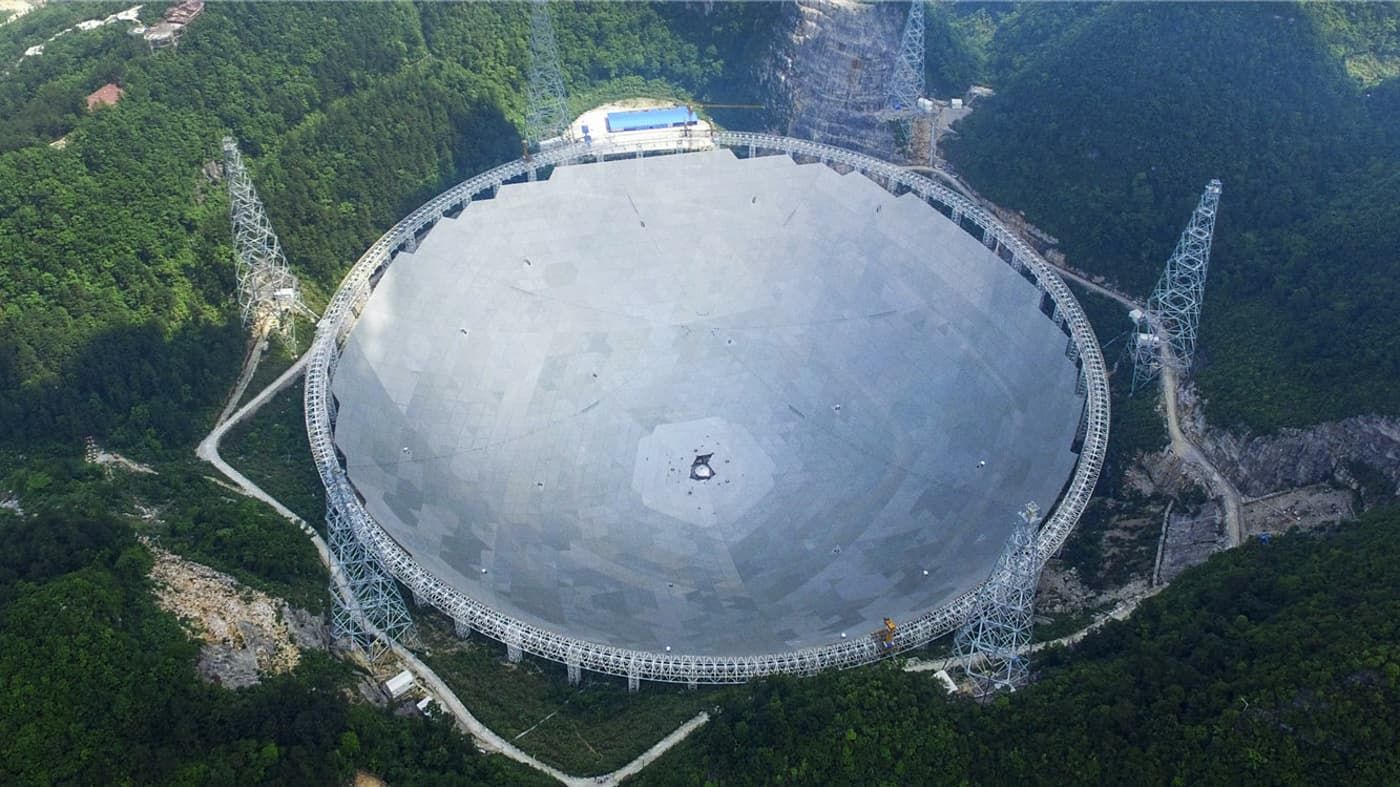China Has Completed FAST, the World's Largest Radio Telescope
China has been in the business to build the world’s largest radio telescope since 2011. We first started following the progress almost exactly one year ago when the shape of the structure started coming together, and an update in November showed that progress was coming along nicely.
Of course, all that progress eventually leads to a completed product, and now the world’s largest radio telescope dubbed Five-hundred-meter Aperture Spherical Telescope (FAST) has officially been completed this month in the Guizhou Province in south-west China.

Image Credit: National Astronomical Observatories FAST project
It’s just a little bit ahead of schedule, as the original completion date was pegged for September of this year.
The location was chosen because of the extremely convenient dimple in the Earth, which allowed for the placement of this massive 500-meter convex dish.
The FAST radio telescope has 4,450 individual triangle-shaped panels that span across a 500-meter structure.
This massive diameter will give the radio telescope the ability to penetrate deeper into space and hopefully find something that existing radio telescopes have been unable to find. Another benefit includes being able to pick up weaker signals far easier than ever before.
"FAST will enable Chinese astronomers to jump-start many scientific goals, such as surveying the neutral hydrogen in the Milky Way, detecting faint pulsars, and listening to possible signals from other civilizations," said NAN Rendong, general engineer and chief scientist for the FAST project. "It's time for China to have its own big telescope."
Radio telescopes have long been used in the search for extra-terrestrial life, just in case some advanced species may exist out there that is also beaming radio signals into space with the hope of hearing an answer or being intercepted by another.
This one is also going to allow for tourists to view up close, as it provides an observation platform that spans around the entire diameter of the structure. Tourists can walk around the radio telescope, as well as view the surrounding greenery from the raised structure.
Will it help us uncover more secrets of our universe? We shall soon see!
Source: Gizmag








